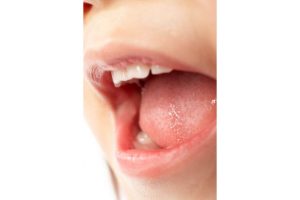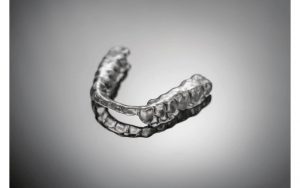A 35 year old lady came in referred by her friend looking to see if I could help her with pain in the right jaw joint area. She had been suffering for 7 years and was unhappy with consuming pain killers on a regular basis.
The “Why” is always the starting point! An examination, diagnosis and treatment planning was carried out. A deprogramming device was given to the patient to wear for 4 days. She felt better and her pain did not worsen. This indicated that it was the muscles that were hyperactive due to a “Clenching” habit that she had developed over the years. She also suffered from headaches. She also lacked “canine guidance”. It is easy to check if one has canine guidance. Bring your teeth together like how you would normally bite and then from that position slide your jaw slowly from left to right, and then back again from right to left. Check whether the teeth at the back are in contact when you slide your jaw from left to right, or from right to left. If they are in contact, they are “interfering” in the bite and there is no canine guidance. This can lead to many problems such as clicking, pain in the jaw joint, muscle pain, headaches, chipping teeth, bony growth etc. It all depends on what the weakest link in one’s stomatognathic system is.
In the case of our patient who had otherwise pristine teeth, her muscles surrounding the jaw joint and the chewing muscles were in a constant state of spasm. This was leading to the pain. Her jaw joint was healthy. Once the diagnosis was made the treatment targeted the cause….nocturnal clenching.
An occlusal splint in centric relation (CR) was fabricated for the patient to wear at night. The pain began to resolve within 2 weeks. Low level laser therapy was carried out for the muscles of the right jaw joint twice a week. Complete resolution was seen in 3 months. This was due to a compliant patient. She followed all home care instructions very well.
The patient was happy with the outcome and desired a stable bite to prevent recurrence of the pain. An examination, diagnosis and treatment plan was carried out once again to plan for introducing “canine guidance” into her bite. A “trial equilibration” was carried out on the jaw simulator to see whether canine guidance can be obtained easily. “Equilibration” means evening out of the bite. The goal is to get equal intensity contacts on all the teeth when the patient’s jaw joint is fully seated and is in a stable position. As I mentioned earlier the longevity and stability of dentistry performed depends on the stability of the jaw joint. In this particular case it was noted that canine guidance was obtained by adding a little composite to the back of the upper front teeth.
The treatment carried out on the jaw simulator was now carried out with a predictable outcome in the patient’s mouth. This method eliminated guesswork. A new occlusal splint was fabricated to be used only at night.
The patient was thrilled to have not consumed any pain medication since her visit to us. All of this was possible because we searched, found and addressed the “Why”!


















